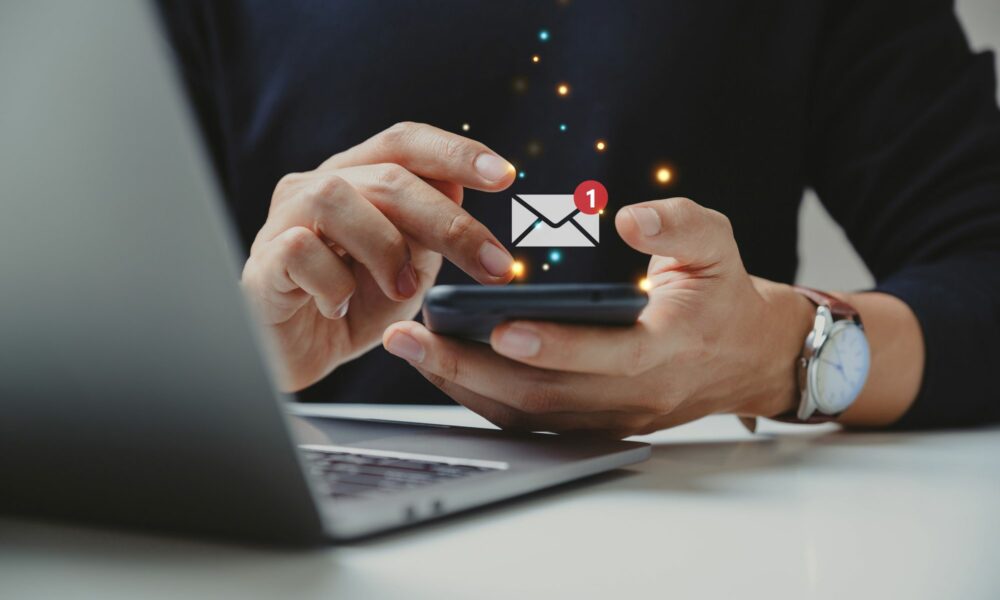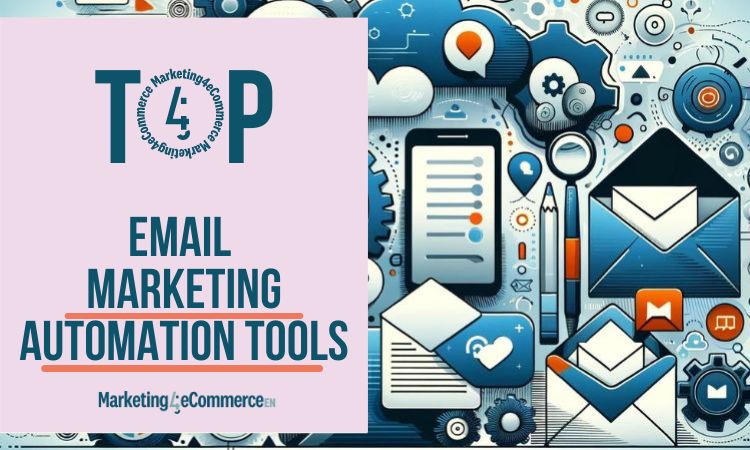Email marketing remains one of the most effective ways to reach and engage with your audience. Whether you are a small business owner, a marketer, or an entrepreneur, developing a strong email marketing strategy is crucial for building lasting relationships with your customers and driving significant business growth. In this blog, we will explore the key steps involved in creating a successful email marketing strategy that delivers results.
1. Define Your Goals
Before diving into the technical aspects of email marketing, it’s important to clearly define what you want to achieve. Are you looking to increase brand awareness, drive sales, promote a new product, or perhaps re-engage with dormant customers? Your goals will shape the entire strategy, influencing everything from the type of content you create to the frequency of your emails.
Take the time to establish specific, measurable, achievable, relevant, and time-bound (SMART) goals. For instance, instead of setting a vague goal like “increase sales,” aim for something more defined, such as “increase online sales by 20% over the next quarter through targeted email campaigns.” Clear goals will provide direction and help you measure the success of your strategy.
2. Understand Your Audience
A successful email marketing strategy hinges on understanding your audience. Who are they? What are their pain points, needs, and interests? The better you know your audience, the more effectively you can tailor your messages to resonate with them.
Start by analyzing your existing customer data. Look at demographics, purchasing behavior, and engagement patterns. Consider creating customer personas—detailed profiles representing different segments of your audience. These personas should include information such as age, gender, location, interests, and buying behavior.
Surveys and feedback forms can also be valuable tools for gaining insights into your audience’s preferences and pain points. The more detailed your understanding of your audience, the more personalized and relevant your email content will be, leading to higher engagement rates.
3. Build and Segment Your Email List
Your email list is the foundation of your email marketing strategy. To grow this list, consider multiple tactics such as offering lead magnets (e.g., eBooks, checklists, or discount codes), adding sign-up forms to your website, or using social media to promote your newsletter.
However, quantity alone is not enough—you need quality. A highly engaged, smaller list is often more valuable than a large, uninterested one. Therefore, it’s important to ensure that your subscribers have willingly opted in to receive your emails and are genuinely interested in what you offer.
Once you have a list, segmentation is key. Segmenting your email list involves dividing it into smaller groups based on specific criteria such as demographics, purchase history, or engagement level. This allows you to send highly targeted and relevant emails to each group, increasing the chances of your emails being opened and acted upon.
For example, if you run an online clothing store, you might segment your list by gender, location, or past purchase behavior (e.g., frequent buyers vs. first-time buyers). This way, you can send tailored promotions or recommendations that align with each segment’s preferences.
4. Choose the Right Email Marketing Platform
Selecting the right email marketing platform is critical for managing your campaigns efficiently. Look for a platform that offers robust features such as email automation, segmentation, analytics, and customizable templates. Some popular email marketing platforms include Mailchimp, Constant Contact, and Sendinblue.
Consider your specific needs and budget when choosing a platform. For instance, if you’re a small business with a tight budget, you might prioritize cost-effective options. On the other hand, if you need advanced automation and segmentation features, you might opt for a more comprehensive solution.
Your chosen platform should also integrate smoothly with your existing tools, such as your CRM system or e-commerce platform, to streamline your marketing efforts.
5. Craft Engaging Content
The content of your emails is what ultimately drives engagement and conversions. To create compelling content, start with attention-grabbing subject lines. A well-crafted subject line should be clear, concise, and entice the reader to open the email. Avoid using all caps or excessive punctuation, as this can make your email appear spammy.
Once you’ve captured your audience’s attention, focus on delivering value in the body of the email. This could be through informative articles, product updates, special offers, or personalized recommendations. The key is to make your content relevant and valuable to your subscribers.
Visuals also play a significant role in email engagement. Include high-quality images, videos, or GIFs that complement your message and make your email more visually appealing. However, be mindful not to overload your email with too many images, as this can affect load times and deliverability.
Lastly, always include a clear call to action (CTA). Your CTA should guide recipients toward the desired action, whether it’s making a purchase, signing up for an event, or downloading a resource. Make sure your CTA stands out visually and is easy to click on both desktop and mobile devices.
6. Automate Your Email Campaigns
Automation is a powerful tool that can help you send timely and relevant emails to your subscribers without manually managing each campaign. Automated emails can include welcome emails, birthday or anniversary emails, abandoned cart reminders, and re-engagement campaigns.
For example, if someone subscribes to your newsletter, you can set up an automated welcome series that introduces them to your brand, highlights your best products, and offers a special discount for their first purchase. Automation ensures that your audience receives the right message at the right time, enhancing their experience with your brand.
7. Test and Optimize
Email marketing is not a set-it-and-forget-it strategy. To achieve the best results, continuously test and optimize your campaigns. A/B testing, also known as split testing, is a popular method where you test two variations of an email to see which one performs better.
You can test various elements such as subject lines, email content, CTAs, images, and send times. For example, you might test whether a subject line with emojis performs better than one without, or whether a CTA button in a different color gets more clicks.
Monitor your email metrics closely, including open rates, click-through rates, conversion rates, and unsubscribe rates. These metrics provide valuable insights into what’s working and what needs improvement. Use this data to refine your strategy and make data-driven decisions.
8. Ensure Compliance with Email Marketing Laws
Compliance with email marketing laws is essential to avoid penalties and maintain your subscribers’ trust. Make sure your emails comply with regulations such as the CAN-SPAM Act in the United States, the General Data Protection Regulation (GDPR) in Europe, or the Canadian Anti-Spam Legislation (CASL).
Key compliance practices include obtaining explicit consent before adding someone to your email list, providing a clear and easy way for subscribers to opt-out, and including your business’s physical address in every email.
Additionally, it’s important to respect your subscribers’ preferences and privacy. Avoid bombarding them with too many emails, and honor any opt-out requests promptly.
9. Consider Partnering with an Email Marketing Agency
Creating an effective email marketing strategy requires careful planning, a deep understanding of your audience, and ongoing optimization. While these tasks are manageable in-house, partnering with an experienced email marketing agency can elevate your strategy to the next level. An agency brings specialized expertise and resources to the table, helping you refine your goals, better segment your audience, and craft more engaging content.
By working with an email marketing agency, you can leverage advanced tools and insights that might not be readily available to your in-house team. Agencies often have access to the latest marketing technologies and can implement sophisticated automation and personalization strategies that drive higher engagement and conversion rates. Additionally, an agency can provide ongoing analysis and optimization, ensuring your campaigns continuously improve and adapt to changing market trends.
Outsourcing your email marketing efforts allows you to focus on other critical areas of your business while knowing that your email campaigns are in expert hands. With the agency’s support, you can build a strategy that not only drives engagement but also fosters long-term relationships with your customers.
10. Analyze and Improve
Finally, analyzing your email marketing performance is crucial for ongoing improvement. Use the analytics tools provided by your email marketing platform to track key metrics such as open rates, click-through rates, conversion rates, and unsubscribe rates.
In addition to these metrics, pay attention to the feedback you receive from your subscribers. Are they engaging with your content? Are there common themes in their replies or complaints? Use this feedback to make adjustments to your strategy.
Regularly review your goals and progress, and be open to experimenting with new approaches. Email marketing is an ever-evolving field, and staying adaptable will help you stay ahead of the curve.
Creating an effective email marketing strategy requires careful planning, a deep understanding of your audience, and ongoing optimization. By defining clear goals, segmenting your audience, crafting engaging content, and leveraging automation, you can build a strategy that not only drives engagement but also fosters long-term relationships with your customers. Remember, the key to success is delivering value in every email you send.
However, the process can be complex and time-consuming, which is why partnering with an email marketing agency can be a game-changer. An agency can provide the expertise, resources, and technology needed to take your email marketing efforts to the next level, helping you increase brand loyalty, boost sales, and ultimately achieve your business objectives. With a well-executed email marketing strategy, supported by professional guidance, your business is poised for success.





